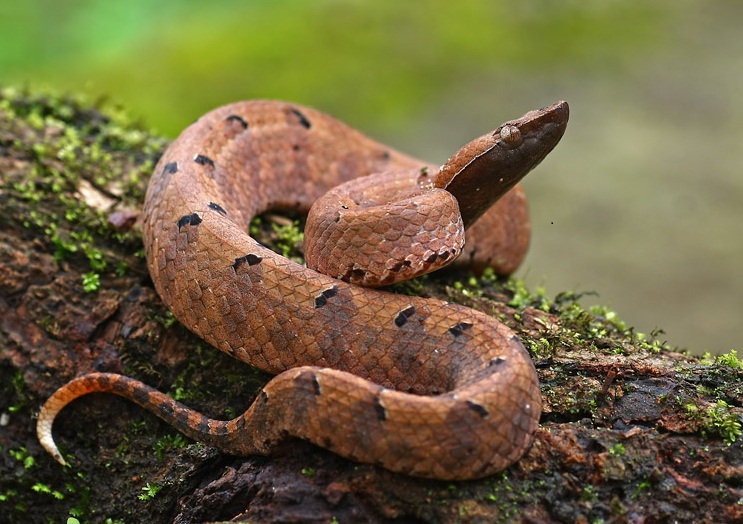Archive for the ‘Snake envenomation’ Category
Snake envenomation in India: Every year, 49 000 people in rural India die from snakebite poisoning
Tuesday, March 19th, 2019- “…..Morbidities attributable to snakebite are still high, and 44% of snakebite-associated mortalities are because of capillary leak syndrome characterized by swelling, hypotension, and hemoconcentration; and renal failure due to Russell ‘s viper poisoning.
- In 2017, WHO categorized snakebite as a high-priority neglected tropical disease and in
- May, 2018, WHO resolved to decrease the mortality and morbidity of snakebite poisoning and coordinate global efforts to control snakebite…..”
Venomous snakes and global hotspots
Tuesday, March 19th, 2019- Snakebite envenoming is a frequently overlooked cause of mortality and morbidity.
- Snakebites are responsible for 81 000–138 000 deaths annually.
- Contact from venomous snakes, spiders, and scorpions contribute to 1·2 million years of life lived with disability annually.
https://youtu.be/y3ZYUdcteTM?t=5
The hump-nosed pit viper (Hypnale hypnale)
Sunday, December 30th, 2018
Kumar KS, Narayanan S, Udayabhaskaran V, Thulaseedharan NK.
Clinical and epidemiologic profile and predictors of outcome of poisonous snake bites – an analysis of 1,500 cases from a tertiary care center in Malabar, North Kerala, India. Int J Gen Med. 2018;11:209-216. Published 2018 Jun 5. doi:10.2147/IJGM.S136153
- No antidote available for its deadly venom.
- Also called the hump-nosed moccasin for its pointed and upturned snout
- A major killer endemic to the Western Ghats, a mountain range of South India, and Sri Lanka.
- The standard polyvalent antivenom used for the four most poisonous snakes of the region — the Indian cobra (Naja naja), Indian krait (Bangarus caeruleus), Russell’s viper (Daboia russelii) and saw-scaled viper (Echis carinatus) — does not work on hump-nosed pit viper venom.
- Hump-nosed pit viper envenomation typically brings on acute kidney injury leading to corticoid necrosis and death
Black mamba: One of the most feared snake species of the African savanna.
Sunday, December 30th, 2018In vivo neutralization of dendrotoxin-mediated neurotoxicity of black mamba venom by oligoclonal human IgG antibodies
Nature Communications volume 9, Article number: 3928 (2018)
“…..The black mamba (Dendroaspis polylepis) is one of the most feared snake species of the African savanna. It has a potent, fast-acting neurotoxic venom comprised of dendrotoxins and α-neurotoxins associated with high fatality in untreated victims. Current antivenoms are both scarce on the African continent and present a number of drawbacks as they are derived from the plasma of hyper-immunized large mammals…..”
- “…Snakebite envenoming exacts a death toll of 80–150,000 victims each year, leaves approximately four times as many maimed for life1, and has recently been recognized as a Neglected Tropical Disease by the World Health Organization (WHO)….”
- “:…..The notorious black mamba (Dendroaspis polylepis) from sub-Saharan Africa is a particularly dangerous species due to its size, defensive nature, and fast-acting neurotoxic venom. Life threatening clinical manifestations of D. polylepis envenoming include flaccid paralysis due to blockade of neuromuscular transmission resulting from inhibition of nicotinic acetylcholine receptors in the peripheral nervous system caused by α-neurotoxins (both short-chain and long-chain types) of the three-finger toxin superfamily….”
Small molecule therapeutics (SMTs) polymer nanoparticles (NP) and have been proposed as potential prereferral treatments for snakebite
Saturday, December 22nd, 2018Bulfone TC, Samuel SP, Bickler PE, Lewin MR.
Developing Small Molecule Therapeutics for the Initial and Adjunctive Treatment of Snakebite.
J Trop Med. 2018;2018:4320175. Published 2018 Jul 30. doi:10.1155/2018/4320175
- Snakebite envenomation is a neglected tropical disease that causes more than 100,000 deaths every year
- SMTs represent a potentially useful adjunctive therapy to antivenoms, the current mainstay of care for symptomatic snakebite.
Engineered nanoparticles bind elapid snake venom toxins and inhibit venom-induced dermonecrosis
- Jeffrey O’Brien,
- Shih-Hui Lee,
- José María Gutiérrez,
- Kenneth J. Shea

- Published: October 4, 2018
- https://doi.org/10.1371/journal.pntd.0006736
“…..The work describes hope for treatment of snakebite, a broad-spectrum antivenom comprised polymer nanoparticles (NPs) engineered to sequester the major protein toxins in elapid snakes. The stable, low-cost NPs can be administered subcutaneously immediately after the bite at the site of envenoming to halt or reduce the extent of local tissue damage and mitigate the systemic distribution of toxins post-envenoming…..”
Nanoparticles and Snakebites
Monday, October 15th, 2018Snakes kill or cripple 500,000 people a year
“……Dr. Shea’s lab is creating hydrogel nanoparticles coated with polymers — the building blocks of plastics — small enough to attach to proteins.
While screening them against common venoms, he isolated some nanoparticles that bind with and neutralize two poisons produced by snakes like cobras, kraits, coral snakes, sea snakes and mambas.
José María Gutiérrez, a venom specialist at the University of Costa Rica, injected dozens of mice with the venom of the black-necked spitting cobra. He found that Dr. Shea’s nanoparticles significantly reduced tissue damage in the mice. Importantly, the nanoparticles did not appear to interfere with normal proteins or to trigger dangerous allergic reactions……”

In June, 2017, snakebite envenoming was classified as a category A neglected tropical disease
Saturday, July 21st, 2018Vulnerability to snakebite envenoming: a global mapping of hotspots






